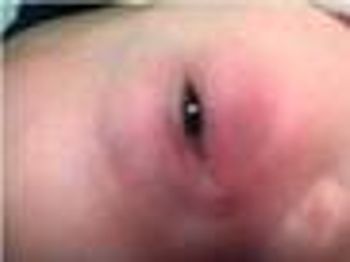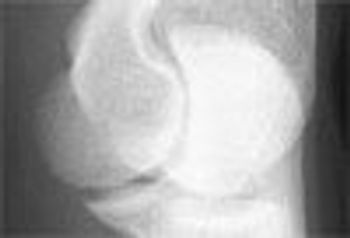
After several 5 mg doses of clonidine, this 5 kg boy became extremely lethargic and hypotensive. What went wrong?

After several 5 mg doses of clonidine, this 5 kg boy became extremely lethargic and hypotensive. What went wrong?

A prescription was called into the local pharmacy for ciprofloxacin suspension (200 mg via G-tube bid [10 mg/kg/dose]). After the patient received 2 doses of the medication, the parents noticed that the G-tube was clogged off. What’s the problem here?

Ketorolac is a good option for relieving pain in patients with sickle cell disease, but there can be a problem with how this agent is prescribed for children.

Ceftriaxone is used to treat an array of infections and can be given once daily IV or IM. However, it should generally be avoided in neonates, especially those with high bilirubin levels. This case demonstrates how problems can -- and do -- occur with this agent.

Beware handwritten prescriptions for insulin and use of abbreviations....this case illustrates the dangers.

Infants acetaminophen, 80 mg/0.8 mL, was taken off the market early in 2012, and most pharmacies now only carry the 160 mg/5mL concentration. The label, however, does not provide instruction on how to administer an infant dose. Here, another major problem plus simple measures to prevent under- or over-dosing.

Through our sister site, Physicians Practice, we are able to provide you with news and information you can use to help run your private medical practice from experts covering everything from health IT innovations to small rewards for your office staff. But now we want to hear from our other experts - you. Take our brief editorial survey to tell us what you want to read in the coming year both in print and online. We've provided some topics, you just tell us how interested you are in these ideas. By completing the survey, you'll have the chance to enter to win a $500 Visa gift card. The survey will run through July 27th. No purchase is necessary. Void where prohibited. Visa is not a particular in or sponsor of this Sweepstakes. See official rules for full details.


A 17-year-old girl presented for evaluation of right hip pain. Several months earlier she had incurred a twisting injury to her hip when she landed from a jump while dancing.

Tar on the feet and legs can be an unwelcome consequence of summer trips to the beach. Getting it off can be difficult, painful, and harmful to the underlying tissue. Tell parents they can make removal easier by gently rubbing a small amount of mayonnaise on the affected area.

An 8-week-old boy is brought for evaluation of gradually worsening yellow skin discoloration of about 1 week's duration. His parents report that he has had constipation for the past several days; before that, he had green diarrhea and occasionally spit up after breast-feeding. The infant has been irritable and has been sleeping more often. He has had no fever, no change in eating habits or in the frequency of wet diapers, and no sick contacts.

ABSTRACT: Patient compliance is a significant problem in exercise therapy and bracing for adolescent scoliosis, and exercise has been considered to have no therapeutic benefit. According to recent studies, however, muscle function asymmetry is a consistent finding in patients with this condition and is correctable with progressive resistance exercises. Patients' baseline and progress can be quantified accurately with exercise by performing precise measurements of torso rotation and lumbar strengthening. Strengthening is associated with control of scoliotic curves, if they are below the operative level. Because even some decrease in the amount of curve may be expected, this form of therapy may be as beneficial as bracing. The treatment also may be used for controlling pain in older patients with scoliosis.

ABSTRACT: Because almost one tenth of American children aged 2 to 11 years have untreated tooth decay, a physical examination that includes inspection of the mouth is crucial. Look for cavitated or noncavitated lesions, dental fillings, and missing teeth; gingivitis and/or plaque, chalky white spots, or deep fissures on the teeth suggest dental decay. Dental care strategies that can be discussed at well-child visits include the benefits of daily flossing and brushing with fluoridated toothpaste, limited intake of dietary sugar, the establishment of a dental home, and use of protective mouthguards and face protectors during sport activities. Fluoride supplementation can be prescribed for children exposed to inadequate amounts in the water supply. The Caries-Risk Assessment Tool can help identify children at high risk for tooth decay. The pediatrician can have a great impact on ensuring that children obtain necessary dental care; a literature review found that children referred to a dentist by a primary care provider were more likely to visit a dentist than those not referred.

I enjoyed the case involving an 8-year-old boy whose hand was bitten by a copperhead snake1 but would point out the following inaccuracies.

A well-nourished 17-year-old of average height and weight was referred for evaluation of persistent right lower leg pain of 3 months' duration. He was not taking any medications, had no allergies, and denied trauma to the area.

A healthy 16-year-old girl was bothered by a patch of white hair on her forehead; she also had a few white plaques on her abdomen, which had been present since birth. Her maternal great grandmother and maternal grandfather, as well as her mother, had a similar pattern of white hair.

If the infectious agent is penicillin-sensitive and especially if the patient responds well to penicillin VK with each episode, would a longer course of penicillin be a more effective treatment?

A 16-year-old boy is concerned that his right index finger looks "odd." The finger is several centimeters longer than his left index finger, and it is also wider. The boy's mother reported that the finger had always seemed to be a little larger than the others, even when the patient was an infant, but no one paid it much attention.

An otherwise healthy 16-year-old girl presented with medial arm pain after falling on her left elbow while skating. Robert P. Blereau, MD, and Timothy J. Haley, MD, of Morgan City, La, write that a radiograph of the left upper arm showed a spur projecting from the distal humerus; there was no fracture or dislocation.

Published: April 1st 2005 | Updated:

Published: September 1st 2007 | Updated:

Published: April 1st 2007 | Updated:

Published: June 1st 2006 | Updated:

Published: July 27th 2009 | Updated:

Published: August 22nd 2011 | Updated: